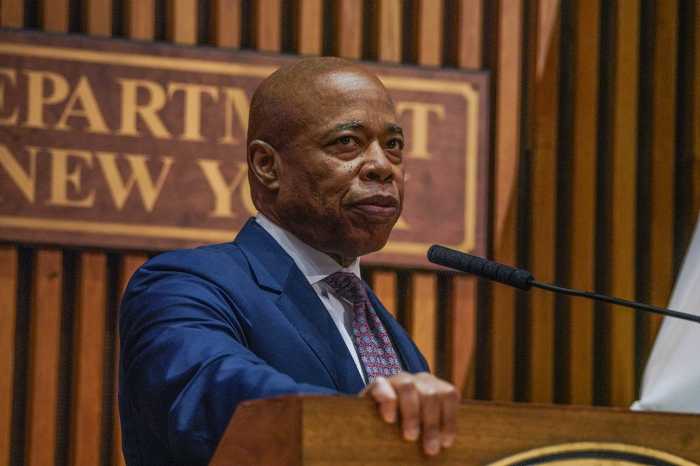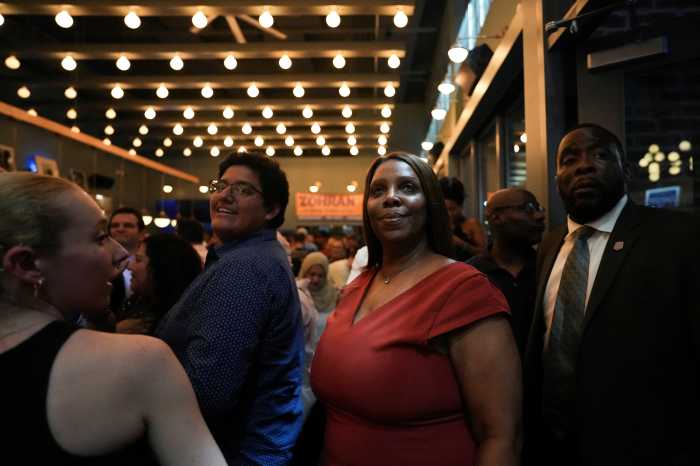Mayor Eric Adams on Tuesday said two violent incidents that shook the city the night before, including one where a cop in Queens was shot and killed, resulted from a triad of issues that current laws and policies do not address.
At the same time, Adams sought to dispel the idea that crime is running rampant throughout the city, pointing to his administration’s purported success in bringing crime down overall.
The mayor said the issues he identified — recidivism, severe mental illness and random acts of violence — contributed to the shooting death of Police Officer Jonathan Diller in Far Rockaway; and a straphanger getting killed by a subway train after being pushed onto the tracks at a Harlem station on Monday night.
During his weekly news conference, on March 26, Mayor Adams said the alleged perpetrators of both incidents had long wrap sheets and claimed the latter has severe mental health issues.
“You do an analysis of all of these reporting that you’re doing and you’re gonna keep coming up with the same three items: severe mental health, random acts of violence, recidivism over and over again,” Adams told reporters. “And what’s interesting is that our practices, policies and laws are not going after those three issues.”
Cops have taken two suspects into custody in Diller’s killing, which took place when he and his partner approached a car parked in a bus stop in Far Rockaway and ended up in a gunfight with the passengers. They also arrested a man suspected of shoving the subway rider into the path of an uptown 4 train without provocation at the 125th Street and Lexington Avenue station.
The mayor spoke in stark terms about the alleged perpetrators of both violent incidents.
“These are bad people who are doing bad things to good people,” the mayor said. “It’s the good guys against the bad guys, and we have to recognize that.”
Adams said recidivism could be addressed by changing the state discovery laws, which were reformed in 2019, to better accommodate a torrent of paperwork he argued is preventing district attorneys from prosecuting numerous violent offenders.
When it comes to stemming incidents caused by those with severe mental illness, the mayor pointed to a suite of reforms his administration is pushing in Albany to better track those who have been in psychiatric care after they are released.
It remains unclear if Albany lawmakers will take action on either front as its April 1 deadline to deliver a budget for the coming fiscal year looms.
He also predicted there will be a mass exodus of employees from law enforcement agencies including the NYPD, Department of Corrections and district attorney’s offices.
“The foundation of the public safety apparatus is dissolving right in front of our eyes,” he said. “And if we don’t get in front of it, we are going to be dealing with a severe public safety crisis that other cities are experiencing.”
Yet, even as he gave those dire warnings, the mayor also sought to hammer home that the city is not “out of control,” due to the efforts of his administration to lower the crime rate. That includes, he asserted, a 5.6% drop in subway crime since he took office.
“Because we are taking action, our city is not out of control, the numbers show that,” he said. “Shootings are down, homicides are down, that’s not what we inherited. Every year since I’ve been mayor we have a decrease in subway crime, every year.”
Read more: New Manhattan Borough Director Plans Affordable Housing Revamp




































